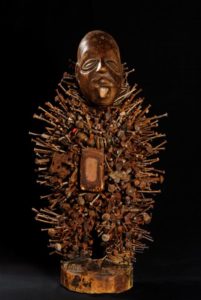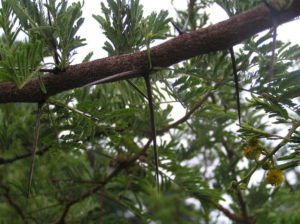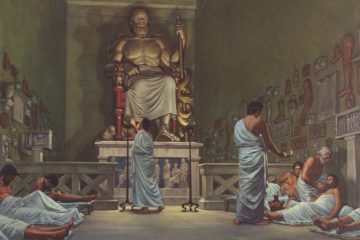During the last months, some questions have been asked on our Acacia thorns fetiche, that’s the reason why we’re writing this article. We hope that this would help you to find another prospective on fetiches, the relative practice and the Spirit of Acacia.

Nailed fetiche from Vili-Yombe culture (Angola) [1]
Often people think that every fetiche (fetish) must have an anthropomorphic or zoomorphic appearance, but this is wrong. If we look at the origin of the term fetish/fetishism we find a different horizon. In fact, when the term was introduced in the academic literature (by Charles de Brosses in 1757 to describe some African form of religion) it was referred to anything, human-made, held to have supernatural powers. The word comes from the Latin factitious, that means “artificially created” and this clarify a lot the true nature of magical fetiches: objects assembled by the magician or the shaman, infused by magical power and possibly animated with the participation of Spirits. From the shaman’s point of view, a fetiche is where a Spirit dwells and so must be considered, respected, worshiped and regularly fed. Of course, the shamanic prospective somehow transcend the anthropological one, and goes deeper into the functioning of fetiches and all the relative magical and spiritual praxis, both of crafting and veneration.
Then, what about our Acacia thorns fetiche? We composed this fetiche in a time of troubles, as a shield and a keeper of our work. Protection is the reason why we choose the necklace-form, maybe unusual, but efficient and versatile. The Spirit of thorny Acacia is basically a guardian of gates and passages.
In ancient times, its wood was used, especially in Egypt and among the Semites, to create things related to the Divine, the Dead and the concept of “connection between two point distant in space and time”. You surely know the legend of Moses and the Ark of the Covenants: it was made from acacia trees and allows him to communicate with YHWH. Something similar was in use in Egypt, where the tree was used for two purposes, only apparently with nothing in common: the crafting of sarcophagus and boats. Both of them were means for the Ba (those part of the soul responsible for personality and personal power): sarcophagus were for the Ba of the mankind what the solar boats Mandjet and Mesektet were for the solar god Ra, because it was believed that even gods had a souls. (And even the Dead had a soul, since ba was used in its plural form to identify the assembly of all the dead.) From this, Acacia drew its relation with the Divine world, the Netherworld and the communication between all the worlds.

Acacia nilotica [2]
Furthermore, from Acacia nilotica, gum arabic was collected and it was burned along with the wood as an incense for the Dead, both to help their travel and as a symbol of immortality (because the previously explained relation with the solar boats of Ra). Thus even if generally considered under the influence of the Sun, Acacia has some inauspicious characteristics that relate it with the most deadly attributes of the Sun. In fact, beyond the modern superficiality that sees the Sun as the most blessed of all stars, in ancient times its malignant nature was considered prevalent, in particular during the summertime and the dog days. That’s why, sometimes, Sun was portrayed black and blamed for the blackening of all things – while the pale Moon was supposed to have a positive influence on growth and Nature.
All these ideas converge in the main symbol to which Acacia is related: the crown of thorns, with which the Christ was crowned before its martyrdom. For this reason, thorny Acacia is also the tree of self-sacrifice, one of the most misunderstood themes in our times. Basically, the nature of martyrdom and self-sacrifice is the same as that of the Hanged Man in classical tarot: it symbolizes the need to become passive in order to invert the vision and achieve new, deeper knowledge about existence or specific situations. This inversion through passiveness is a sacrifice in itself, sometimes bloody, sometimes not, and correspond to the Black Sun blamed for the blackening of matter and soul. The Hanged Man is the one who travel, with his eyes and mind, through space and time and this directly correspond to what the shamans do in their journeys into the spiritual words.
[1] Nailed fetiche from Vili-Yombe culture (Angola) by Eric Brossard Collection
[2] Acacia nilotica by Mpingo Conservation & Developement Initiative


